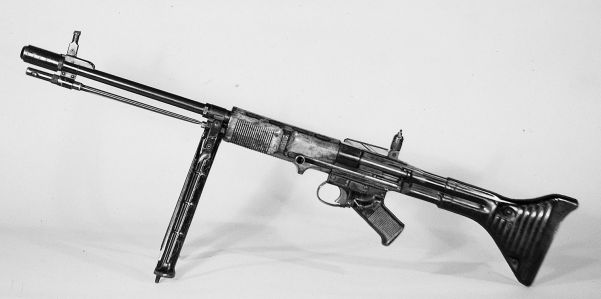
The German paratroop arm was an element of the air force, and many of its weapons were therefore different from those of the army. Thus when the army issued its specification for an assault rifle, the air force decided not to adopt the 7.92mm kurz (short) intermediate-power round and therefore contracted with Rheinmetall-Borsig for an assault rifle suitable for airborne use and chambered for the original 7.92mm high-power round.
The resulting Fallschirmjägergewehr 42 was one of the most remarkable weapons developed in World War II, for although there was nothing entirely novel, the FG 42 marked an evolutionary stage in the development of the compact assault rifle with a straight-through design. In some respects the FG 42 had affinities to the light machine gun, especially in features such as the permanently attached bipod that could be fixed at any point on the exposed barrel.
Other notable elements of the design were the muzzle brake/compensator and the fixed folding bayonet, but a poor aspect was the lack of any provision for the barrel to be changed easily. The FG 42 was delivered in two main variants, one with a steel butt and a sloping pistol grip, and the other with a wooden butt and conventional grip. The weapon was expensive to manufacture, and as a result only 7000 were completed.
Specifications
- Type
- airborne forces assault rifle
- Calibre
- 7.92mm (0.312in)
- Length
- 0.94m (37in)
- Length of Barrel
- 0.502m (19.75in)
- Weight
- 4.53kg (9.94lb)
- Muzzle Velocity
- 760m (2493ft) per second
- Feed
- 20-round magazine (750-800rpm)
